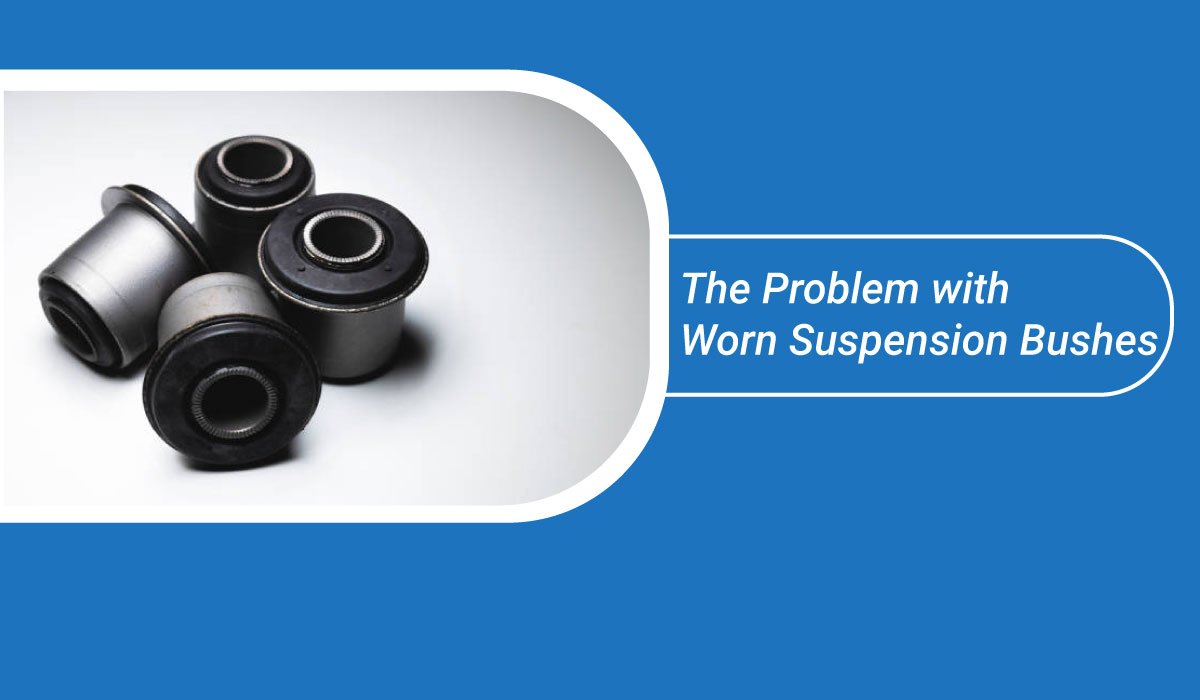Suspension bushes are an essential component in any vehicle, playing a crucial role in maintaining the stability, handling, and comfort of the vehicle. These rubber or polyurethane components are designed to reduce the amount of road noise and vibrations from reaching the cabin, as well as to absorb the impact from any bumps or potholes in the road.
However, despite their important role, suspension bushes often go overlooked, and can wear down over time, causing several problems that can affect the overall performance of the vehicle. In this blog, we will explore the problem with worn suspension bushes, and why it is important to have them inspected and replaced if necessary.
Sign of worn suspension bushes
The first sign of worn suspension bushes is often a knocking or clunking sound coming from the suspension system. This is usually caused by the bushes becoming loose or breaking down, which can cause the metal components of the suspension to rub against each other, creating a loud, metallic noise.
Another common problem associated with worn suspension bushes is a noticeable increase in road noise and vibrations in the cabin. As the bushes wear down, they lose their ability to absorb these sounds and vibrations, which can make the ride much more uncomfortable and can cause fatigue in the driver and passengers.
Worn suspension bushes can also affect the handling and stability of the vehicle. The bushes work to keep the suspension components in place, and when they are worn down, the components can move or shift, affecting the way the vehicle handles. This can cause a few problems, including poor handling, unpredictable handling, and even instability or accidents in severe cases.
Also Read – The Ultimate Guide to Linear Bush Bearings
Causes of Worn Suspension Bushes
The longevity of suspension bushes depends on various factors, including the vehicle’s age, mileage, and environmental conditions. Factors such as prolonged exposure to extreme temperatures, road salt, and poor driving conditions can accelerate wear and tear.
Diagnosing Worn Suspension Bushes
Diagnosing the condition of your suspension bushes can be done through visual inspection, road testing, and seeking professional assessment. Knowing the signs and taking prompt action can prevent further damage and costly repairs.
Handling and Stability Problems
In addition to the handling and stability problems, worn suspension bushes can also cause damage to the rest of the suspension system. For example, when the bushes are worn down, they can no longer keep the suspension components in place, which can cause the components to rub against each other, leading to excessive wear and tear. This can result in expensive repairs and even the need to replace entire suspension components, which can be a significant financial burden.
Another issue with worn suspension bushes is that they can cause an increase in fuel consumption. This is because the worn bushes can cause the vehicle to lose its stability, making it more difficult for the suspension to absorb the bumps and potholes in the road. This can cause the vehicle to waste more energy and fuel, which can lead to increased fuel costs and reduced fuel efficiency.
To avoid these problems and ensure that your vehicle is running smoothly and efficiently, it is important to have your suspension bushes inspected and replaced if necessary. This can be done during a routine vehicle service, and it is a relatively simple process that can be performed quickly and easily by a trained mechanic.
In conclusion,
worn suspension bushes are a problem that should not be ignored, as they can affect the overall performance, handling, and comfort of a vehicle. Regular inspections and replacements can help to keep your vehicle running smoothly and can prevent the need for expensive repairs and replacements down the line. So, if you think your suspension bushes may be worn, be sure to have them inspected and replaced as soon as possible to avoid any potential problems.
FAQs
Q: What are suspension bushes, and what is their role in a vehicle’s suspension system?
A: Suspension bushes, also known as bushings, are components in a vehicle’s suspension system that provide cushioning and flexibility between moving parts. They help absorb shocks, reduce noise and vibrations, and contribute to a smoother ride.
Q: How can I tell if my suspension bushes are worn?
A: Signs of worn suspension bushes include increased noise while driving, a rougher ride, uneven tire wear, and poor handling. You may also notice clunking or knocking sounds when going over bumps. A visual inspection during routine maintenance can help identify worn bushings.
Q: How can I replace worn suspension bushes?
A: Replacing worn suspension bushes typically involves lifting the vehicle, removing the old bushings, and installing new ones. It’s recommended to consult the vehicle’s manual or seek professional help for a proper replacement. Specialized tools may be required, and wheel alignment may be necessary afterward.
Q: How often should I inspect and replace suspension bushes?
A: Regular inspection during routine maintenance is advisable, and replacement intervals can vary depending on driving conditions and vehicle usage. If signs of wear are evident, or if the vehicle exhibits handling issues, it’s recommended to inspect and replace suspension bushes promptly.
Q: Can I drive with worn suspension bushes temporarily?
A: While it’s not ideal, driving with worn suspension bushes for a short period is possible. However, extended use can lead to further damage and increased safety risks.


